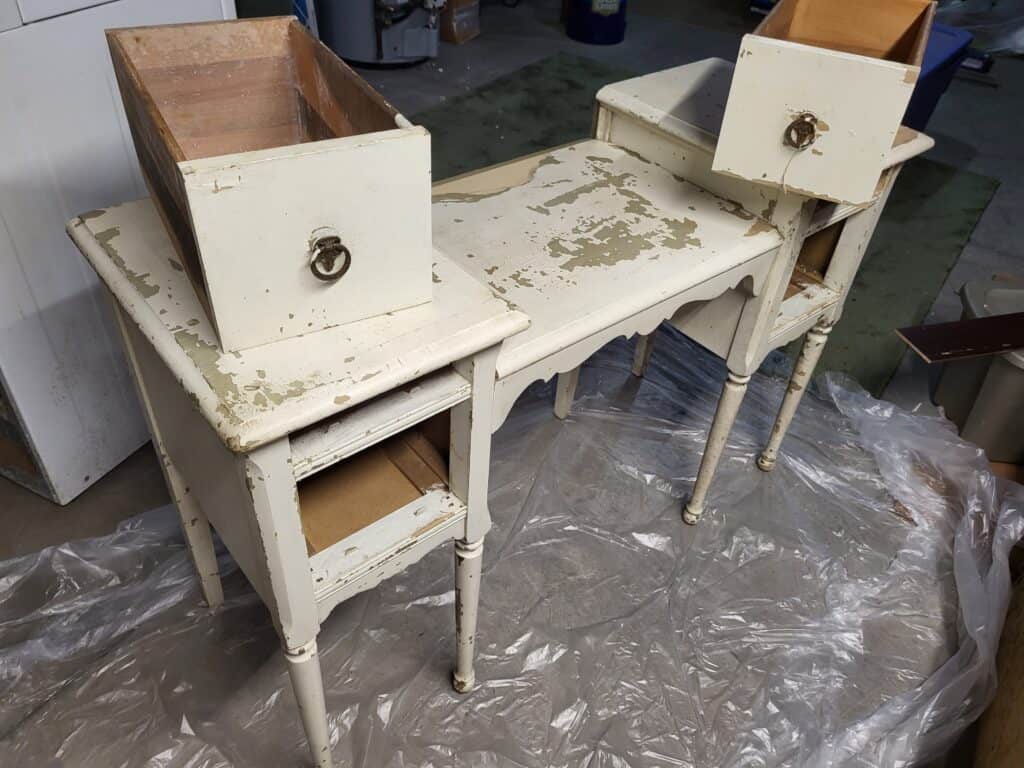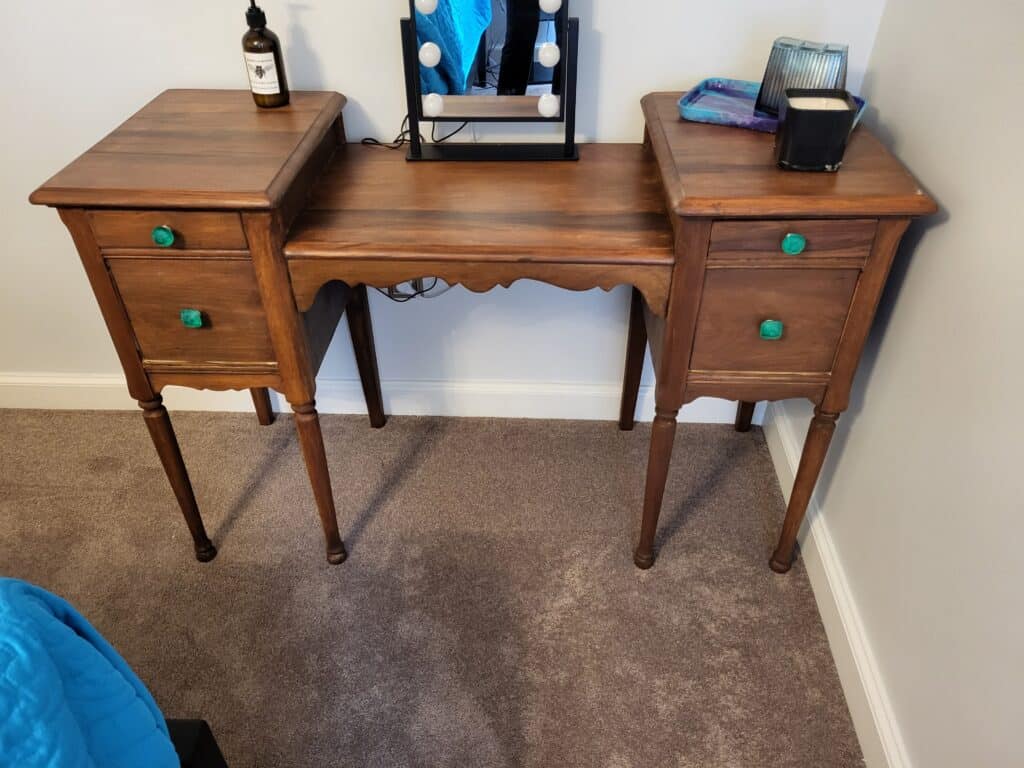
While visiting a block-long yard sale, I found an antique dressing table that was the perfect size for our guestroom. The old girl had many layers of peeling paint, but she was solid. I bought her for $10 (amazing!) and carted off to the basement to figure out how to make her pretty again.
First, I cleaned the piece thoroughly with a mild dish soap and water. When I refinish something, I try to restore the original wood whenever possible, so getting all the grime off helps to assess the condition of the wood.
I hoped to avoid messy paint strippers, but alas, there were so many layers, and since there was a very real possibility some of the paint contained lead, I strolled to the hardware store and picked up a jug of Cleanstrip.
I used that product because A. it supposedly is less harsh than some others, and B. I have used it before, so no learning curve.
And speaking of curves, the dressing table has these beautiful curvy turned wood legs, and getting the stripper out of all the nooks and crannies was a nightmare! But I am getting ahead of myself.
I spread plastic out on the basement floor, placed the furniture in the center, donned my respirator, and began the stripping process. According to the instructions, the paint should start bubbling almost immediately and be ready to scrape off in about 30 minutes. That would have been true if there was only one or two layers of paint. However, this piece had at least 6 different paint jobs over the years, all a different color. So I painted on the stripper, waited, scraped it off, again, and again, and again.
Four days later, I had all but the most stubborn paint removed, and decided that it was as good as it was going to get. After getting rid of the the mess of gooey scraped-off paint, I wiped the entire piece down with vinegar to neutralize any of the stripping agent that might still be lurking on the wood.
By this point I am starting to get a hint of how pretty the wood is, so I am sure I will go the restore, instead of paint, route.
The piece is from the 1930s and has the original veneer on the sides. The veneer was still in great shape, though loose in places, so I used wood glue and clamps to reattach it. I let that dry a full 24 hours before doing anything else.
After the glue had cured, I wiped the whole piece down again with mild soap and water, then let it dry for about 48 hours since I did not want the wood to be damp when I started to sand it.
I used several different tools to sand the dressing table. In addition to an orbital palm sander, I used regular sandpaper, plus sanding sticks to get in all those curves I mentioned earlier. Donning the respirator once again, I got busy.
With sanding complete, a wiped it down yet again with mild dish soap and water, then went over the entire piece with tack cloth to make sure I removed all the dust.
The wood was so beautiful it didn’t need stain, so I brushed on a clear polyurethane finish and called it finished.
I am the first to admit painting this would have been much easier, but she is so beautiful, I think the extra effort was worth it. Do you agree?


That was a lot of work, but it turned out beautiful!!
EXCELLENT job!! It turned out gorgeous! And you have WAY more patience than I do, lol!